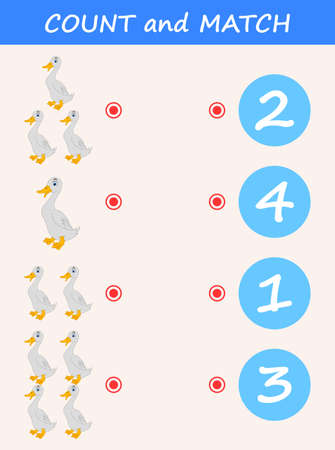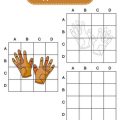Introduction to Palmistry in the UK
Palmistry, also known as chiromancy, has held a curious place within British culture for centuries. Its roots stretch back to ancient civilisations, but it was during the Victorian era that palm reading truly flourished across the United Kingdom. In those times, parlour rooms and travelling fairs alike often featured palmists who claimed to reveal secrets about one’s character and fate by studying the hand. While its mystical reputation occasionally drew scepticism—especially from scientific circles—palmistry remained popular as both a form of entertainment and a tool for self-reflection. Today, Britons encounter palmistry at local markets, holistic fairs, and even in some high street shops. Contemporary perceptions vary: some view it with light-hearted amusement, while others take readings to heart as guidance or inspiration. Regardless of belief, palmistry continues to be woven into the fabric of British life, blending tradition with modern curiosity and evolving alongside the ever-changing cultural landscape of the UK.
2. Getting Started: British Essentials for Palm Reading
Before diving into the intricate world of palmistry, it’s important to set the scene in a way that feels authentically British. Whether you’re conducting a session for friends at home or planning a more formal reading, preparation is key. Below is a guide to assembling your materials, understanding etiquette, and creating an inviting setting—done the proper British way.
Traditional Materials: What You’ll Need
| Item | British Preference | Purpose |
|---|---|---|
| Tablecloth | Crisp white or subtle floral | Creates a tidy, welcoming surface for readings |
| Seating | Cosy armchairs or upright wooden chairs | Encourages comfort and good posture during the session |
| Lighting | Lamps or candles (nothing too harsh) | Soft light sets a calm mood, ideal for interpretation |
| Notebook & Pen | A5 lined with a classic fountain pen | For jotting notes or observations discreetly |
| Cuppa (Tea) | Earl Grey, English Breakfast, or herbal blends | An essential part of British hospitality; helps relax both reader and guest |
Etiquette: Mind Your Manners
Palm reading in Britain is steeped in respect and consideration. Always offer your guest a cup of tea upon arrival—it’s not just polite; it sets a friendly tone. Begin with small talk about the weather or local news before asking to see their hand. Never rush this process; patience is valued.
Key Points of British Etiquette:
- Ask permission: Always request to hold or examine someone’s hand before proceeding.
- No dramatic pronouncements: Avoid alarming statements; keep interpretations balanced and tactful.
- Confidentiality: Respect privacy—never discuss details of someone’s reading with others.
- Manners matter: “Please” and “thank you” go a long way.
Recommended Settings: Creating the Right Atmosphere
The classic British setting for palmistry would be a quiet sitting room, perhaps with soft music playing in the background—think instrumental jazz or gentle classical pieces. If outdoors, choose a tidy garden nook sheltered from the wind. Avoid busy pubs or overly public spaces where privacy could be compromised.
Troubleshooting Common Set-Up Issues:
- Noisy environment? Politely suggest moving to a quieter corner or close doors/windows as needed.
- Lack of seating? Improvise with cushions on the floor—just ensure everyone is comfortable.
- No tea available? Offer water or cordial instead; it’s the gesture that counts.
This careful attention to detail ensures your palm reading session begins on an inviting, respectful note—very much in keeping with British traditions.

3. Understanding the British Terminology of the Palm
When exploring palmistry in the UK, it’s essential to familiarise yourself with the unique vocabulary and subtle differences that local practitioners use. The British approach to palm reading blends traditional terms with regional slang and historic expressions, giving interpretations a distinctly local flavour. Below is a breakdown of key palmistry terms commonly used or adapted in Britain, ensuring you’re on the same wavelength as UK palm readers.
Main Lines and Their British Nicknames
The three primary lines are widely recognised, but you might hear them referred to differently during a reading in Britain:
The Life Line
Often dubbed the “Vitality Line” or simply “the Lifeline,” British readers may enquire about your “general get-up-and-go” or reference how this line reflects your “stamina for daily graft.”
The Heart Line
Sometimes called the “Affection Line,” you’ll hear talk of your “romantic prospects” or even your “capacity for British reserve versus emotional openness.”
The Head Line
Known occasionally as the “Wisdom Line,” some UK palmists might call it your “Logic Stripe” or refer to it when discussing your “level-headedness”—a trait much prized in British culture.
Mounts and Markings: Local Expressions
The raised pads under each finger are known as “mounts.” In the UK, these may be described with familiar British references:
- Mount of Jupiter: Sometimes described as your “leadership bump” or reflecting your “ambition meter.”
- Mount of Venus: You could hear mention of your “romantic streak” or “passion patch.”
Markings such as crosses, stars, or islands may be termed as “quirks” or, more colloquially, “oddities” on your palm.
Finger Names and Cultural Nuances
Beyond standard anatomical terms, fingers might be referenced by traditional British nicknames during readings:
- The Index Finger is often called the “Pointer” or even the “Jupiter Digit.”
- The Little Finger may be referred to as the “Pinky,” though sometimes you’ll hear old-fashioned terms like the “Mercury finger.”
In Summary
By understanding this specialised vocabulary, you’ll not only make sense of a British palm reading but also engage more confidently with local practitioners. This shared language bridges cultural gaps and makes your journey into palmistry much more authentic and enjoyable.
4. Interpreting the Major Lines: British Perspectives
When it comes to palmistry in the UK, there’s a distinct flair in both interpretation and language. This section provides a step-by-step approach to analysing the heart, head, and life lines using British terminology and familiar expressions. Whether you’re having a natter over a cuppa or discussing fortunes at the pub, these methods will help you interpret palms with an unmistakably British touch.
Step 1: Locating the Three Major Lines
Start by identifying the three principal lines on the palm:
- Heart Line: Curves along the top of the palm, beneath the fingers.
- Head Line: Runs horizontally across the middle of the palm.
- Life Line: Arcs around the base of the thumb towards the wrist.
Step 2: Analysing Each Line with British Terminology
| Line | What to Look For | British Interpretation | Common Phrase |
|---|---|---|---|
| Heart Line | Straight, curved, breaks, forks | Straight as a die? Indicates a pragmatic approach to relationships. Forked? Suggests a bit of ‘mucking about’ before settling down. | “Wears their heart on their sleeve.” |
| Head Line | Depth, clarity, length, crosses | A deep line means ‘sharp as a tack.’ If it’s wavy, might be seen as ‘a bit scatty’—creative but unfocused. | “Not just a pretty face.” |
| Life Line | Circular arc, length, splits, chains | A long, unbroken arc is ‘full of beans,’ suggesting robust health. A chain-like appearance? Perhaps ‘had a few scrapes’ along life’s journey. | “Fit as a fiddle” or “Been through the wars.” |
Step 3: Putting It All Together – The British Way
Once you’ve analysed each line individually, consider how they interact. Do any lines cross or diverge? In British palmistry circles, this could indicate someone who’s “got their wires crossed” (confused ambitions) or “knows which side their bread is buttered” (making wise choices). Reflect on these overlaps using everyday British idioms for an authentic reading experience.
Quick Recap Table: Major Lines & Interpretations
| Palm Line | British Key Traits |
|---|---|
| Heart Line | Straightforwardness in love; emotional openness; occasional romantic misadventures (“bit of a lark”). |
| Head Line | Mental clarity or creative thinking; practical intelligence (“good old common sense”). |
| Life Line | Liveliness and energy levels; resilience (“made of stern stuff”); health fortunes. |
Tip:
If you’re ever unsure about an interpretation, remember to keep it light-hearted—after all, in Britain, there’s nothing wrong with having “a chinwag” about fate and fortune over tea.
5. Deciphering Marks, Mounts, and British Quirks
While the main lines of your palm—the heart, head, and life lines—may take centre stage, true aficionados of palmistry know that the devil (or perhaps a bit of British mischief) is in the details. Let’s have a proper chinwag about minor lines, mounts, and those peculiar marks that make each palm as unique as a British postcode.
Understanding Minor Lines the British Way
Beyond the major highways on your palm, you’ll find fainter byways and cul-de-sacs: minor lines such as the fate line, marriage lines (sometimes called ‘union lines’), and intuition lines. In true British fashion, these are often referred to with a touch of understatement—think “the odd little squiggle” or “that faint wisp near the pinkie.” Brits might also use phrases like “the old ticker’s whisper” for the health line or “fortune’s footpath” for the fate line. The presence or absence of these lines can be interpreted as subtle hints about one’s romantic prospects or career journey—much like reading between the lines of a BBC drama.
The Mounts: A Proper Introduction
Palmistry identifies several raised pads at the base of each finger—these are known as mounts. In British terminology, you might hear them described with a dose of humour: “Jupiter’s knoll” beneath your index finger, “Saturn’s mound” under your middle digit, or “Apollo’s hillock” below your ring finger. The Mount of Venus (that fleshy bit at your thumb) is sometimes affectionately dubbed “the English rose,” symbolising warmth and emotional depth. If a mount is particularly pronounced, it may be called “as bold as brass,” suggesting a strong influence in your personality; if it’s rather flat, you might hear it described as “a bit on the shy side.”
Distinctive Marks: Spots, Crosses, and More
No British palm reading would be complete without noting those distinctive marks—spots, crosses, stars, and islands—that pepper our palms much like freckles after a summer in Brighton. A cross might be referred to as an “X marks the spot,” hinting at a pivotal event. Dots or small circles can be called “blips on the radar”—perhaps denoting brief but significant experiences. Islands (oval shapes along a line) might be termed “the London loop,” suggesting periods of delay or challenge not unlike waiting for the next train on the Tube.
Cultural Quirks: Interpreting with a Wink
When interpreting these features through a British lens, remember to add a sprinkle of dry wit and gentle scepticism—a nod to Britain’s tradition of not taking oneself too seriously. A reader might quip that an abundance of marks means you’re “destined for more twists than an EastEnders plotline,” or that a particularly high mount indicates you’re “as ambitious as a contestant on The Apprentice.” Using familiar references helps put clients at ease and makes the experience distinctly local.
By blending technical observation with uniquely British humour and references, you’ll not only decode what lies in your hands but also keep things as light-hearted—and insightful—as a chat over a cuppa.
6. Common British Myths and Misconceptions
When it comes to palmistry in Britain, there is a rich tapestry of myths, superstitions, and misunderstandings that colour the practice with local flavour. For many Brits, palm reading is often viewed with a blend of intrigue and scepticism—a pastime found at seaside piers or village fetes rather than a serious pursuit. One prevailing myth is that only Romani fortune-tellers or “gypsies” can truly read palms, a stereotype rooted in Victorian era entertainment rather than fact. In truth, anyone willing to study the lines and mounts can learn the basics of chiromancy.
Another widespread misconception is that having a Simian Line—where the heart and head lines merge into one—is an omen of ill luck or eccentricity. While some British folklore associates this with odd behaviour, modern palmists view it as merely a rare line formation with no inherent negative meaning. Similarly, the belief that broken or chained life lines are signs of impending doom persists in some circles, despite these features more likely indicating periods of change or stress rather than disaster.
Superstitions also abound regarding which hand to read. In Britain, it’s commonly said that “the left is what you’re born with; the right is what you make of it.” However, interpretations vary between readers and regions. Some even believe that reading your own palm invites bad luck—a notion with no basis in traditional or contemporary practice. Finally, there’s the idea that palmistry reveals fixed fate. Many British practitioners now emphasise that palm lines can change over time, reflecting personal growth and choices rather than unalterable destiny.
Understanding these uniquely British perspectives helps separate entertainment from authentic analysis. By acknowledging local beliefs while applying proper technique and terminology, you can approach palmistry both respectfully and insightfully within the UK context.
7. Bringing It All Together: Practical Advice for the British Context
As you embark on your journey of palm reading in the UK, it’s essential to blend traditional techniques with an awareness of local customs and etiquette. The following practical advice will help ensure your palmistry sessions are both insightful and culturally appropriate.
Tips for Delivering Palm Readings in the UK
Conversational Cues and Approach
Begin with a gentle introduction, such as “Would you mind if I have a look at your palm?” This sets a respectful tone. Throughout the reading, use conversational language familiar to your audience—phrases like “bit of a crossroads” or “things might be looking up soon” resonate well. Avoid making bold claims; instead, offer insights as possibilities rather than certainties, e.g., “It suggests you might…” rather than “You will definitely…”
Politeness and Sensitivity
British culture places high value on politeness and subtlety. Keep your delivery light, especially if discussing personal matters revealed by the lines or mounts. If you come across something potentially sensitive, frame it gently and allow the person space to interpret it themselves. Phrases such as “If you don’t mind me saying…” or “Some people see this as…” can soften statements and foster comfort.
Accuracy and Managing Expectations
Be upfront about the interpretive nature of palmistry: “This is just one way of looking at things.” Emphasise that readings are not absolute predictions but reflective tools. Many Brits appreciate humility—acknowledging the limits of your interpretation builds trust. Should you notice uncertainty in their reaction, reassure them with “Take it with a pinch of salt.”
Respecting Privacy
Privacy is paramount. Avoid sharing details from a reading with others unless given explicit permission. If conducting readings in public spaces—like fairs or markets—offer a private area or lower your voice to maintain discretion. Always ask before touching someone’s hand and respect their comfort levels.
Final Thoughts for British Palmistry Sessions
The key to successful palmistry in Britain lies in sensitivity, open-mindedness, and respect for personal boundaries. By blending traditional techniques with an understanding of local expectations around conversation, accuracy, and privacy, you’ll create meaningful experiences that feel authentic and considerate within the British context.


